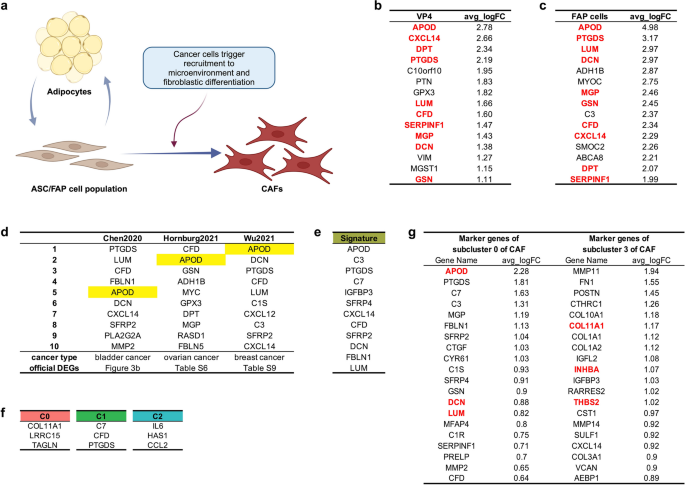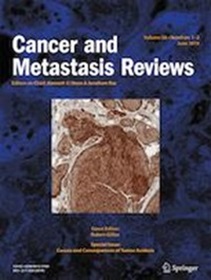侵袭性癌中的纤维脂肪生成祖细胞 APOD+DCN+LUM+ 细胞群
IF 7.7
2区 医学
Q1 ONCOLOGY
引用次数: 0
摘要
我们在侵袭性癌和化疗耐受性癌的样本中发现了一个高度富集的祖细胞群,其特征是具有明确的多基因特征,包括 APOD、DCN 和 LUM。这一细胞群以前被标记为由炎症性癌症相关成纤维细胞(iCAFs)组成。自然产生的成纤维-成脂肪祖细胞(FAPs)以及正常脂肪组织中丰富的基质细胞也具有相同的特征。我们对人类基因表达数据库的分析提供了证据,证明脂肪基质细胞(ASCs)会被肿瘤招募,并在癌症发展到侵袭性和化疗耐受阶段时分化成 CAFs。本文章由计算机程序翻译,如有差异,请以英文原文为准。

The fibro-adipogenic progenitor APOD+DCN+LUM+ cell population in aggressive carcinomas
We identified a progenitor cell population highly enriched in samples from invasive and chemo-resistant carcinomas, characterized by a well-defined multigene signature including APOD, DCN, and LUM. This cell population has previously been labeled as consisting of inflammatory cancer-associated fibroblasts (iCAFs). The same signature characterizes naturally occurring fibro-adipogenic progenitors (FAPs) as well as stromal cells abundant in normal adipose tissue. Our analysis of human gene expression databases provides evidence that adipose stromal cells (ASCs) are recruited by tumors and undergo differentiation into CAFs during cancer progression to invasive and chemotherapy-resistant stages.
求助全文
通过发布文献求助,成功后即可免费获取论文全文。
去求助
来源期刊
CiteScore
17.00
自引率
0.00%
发文量
54
审稿时长
6-12 weeks
期刊介绍:
Contemporary biomedical research is on the threshold of an era in which physiological and pathological processes can be analyzed in increasingly precise and mechanistic terms.The transformation of biology from a largely descriptive, phenomenological discipline to one in which the regulatory principles can be understood and manipulated with predictability brings a new dimension to the study of cancer and the search for effective therapeutic modalities for this disease. Cancer and Metastasis Reviews provides a forum for critical review and discussion of these challenging developments.
A major function of the journal is to review some of the more important and interesting recent developments in the biology and treatment of malignant disease, as well as to highlight new and promising directions, be they technological or conceptual. Contributors are encouraged to review their personal work and be speculative.

 求助内容:
求助内容: 应助结果提醒方式:
应助结果提醒方式:


